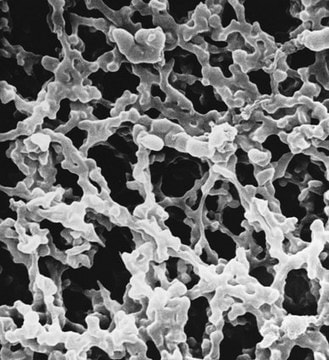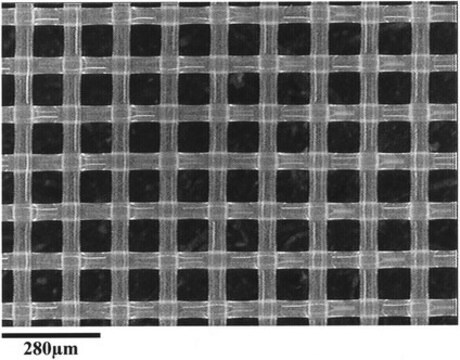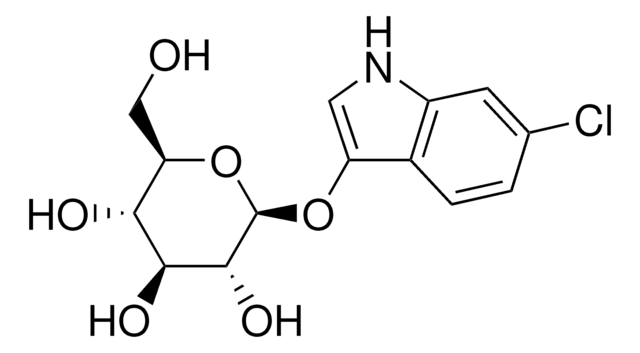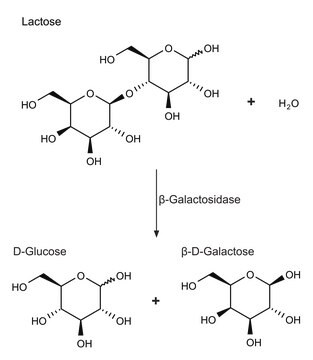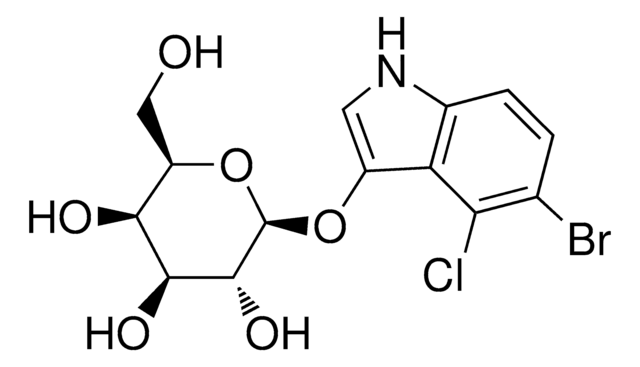Wichtige Dokumente
10884308001
Roche
CPRG
Chlorophenol red-β-D-galactopyranoside
Synonym(e):
Chlorphenolrot-β-D-galactopyranosid, Chlorphenolrot-β-d-galactopyranosid, CPRG, Chlorphenol Rot β-D-galactosid
About This Item
Empfohlene Produkte
Qualitätsniveau
Assay
96% (HPLC)
Form
powder
Verpackung
pkg of 250 mg
Hersteller/Markenname
Roche
Lagerbedingungen
protect from light
pH-Bereich
6-8
Versandbedingung
dry ice
Lagertemp.
−20°C (−15°C to −25°C)
SMILES String
OC[C@H]1O[C@@H](Oc2ccc(cc2Cl)C(=C3/C=CC(=O)C(Cl)=C3)\c4ccccc4S(O)(=O)=O)[C@H](O)[C@@H](O)[C@H]1O
InChI
1S/C25H22Cl2O10S/c26-15-9-12(5-7-17(15)29)21(14-3-1-2-4-20(14)38(33,34)35)13-6-8-18(16(27)10-13)36-25-24(32)23(31)22(30)19(11-28)37-25/h1-10,19,22-25,28,30-32H,11H2,(H,33,34,35)/b21-12-/t19-,22+,23+,24-,25-/m1/s1
InChIKey
YOUWVNCQJOMMEU-AETRGLENSA-N
Suchen Sie nach ähnlichen Produkten? Aufrufen Leitfaden zum Produktvergleich
Allgemeine Beschreibung
Die chemische Formel auf dem Etikett repräsentiert das Mononatriumsalz.
Anwendung
Biochem./physiol. Wirkung
Qualität
Sequenz
Angaben zur Herstellung
Lagerbedingungen (Arbeitslösung): Die rekonstituierte Lösung ist bei 2 bis 8 °C einen Tag stabil.
Lagerung und Haltbarkeit
Sonstige Hinweise
Lagerklassenschlüssel
11 - Combustible Solids
WGK
WGK 1
Flammpunkt (°F)
No data available
Flammpunkt (°C)
No data available
Hier finden Sie alle aktuellen Versionen:
Besitzen Sie dieses Produkt bereits?
In der Dokumentenbibliothek finden Sie die Dokumentation zu den Produkten, die Sie kürzlich erworben haben.
Kunden haben sich ebenfalls angesehen
Unser Team von Wissenschaftlern verfügt über Erfahrung in allen Forschungsbereichen einschließlich Life Science, Materialwissenschaften, chemischer Synthese, Chromatographie, Analytik und vielen mehr..
Setzen Sie sich mit dem technischen Dienst in Verbindung.

